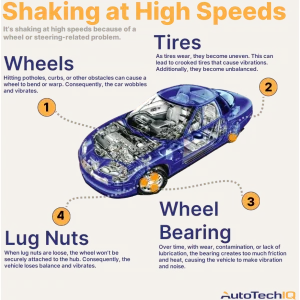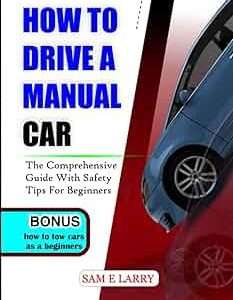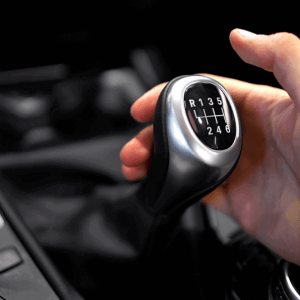In a world increasingly dominated by automatic and continuously variable transmissions (CVTs), the thrill of engaging with a vehicle through a manual gearbox is becoming a rare and precious commodity. For driving enthusiasts, the direct connection, the precise control over engine RPM, and the sheer satisfaction of a perfectly executed heel-toe downshift remain unmatched. Thankfully, a handful of automakers still cater to this niche, offering **cars that still offer manual transmission** for those who crave a more involved driving experience. These vehicles represent a defiant stand against the tide of automation, celebrating the art of driving in its purest form. The continued availability of **cars that still offer manual transmission** speaks volumes about the enduring appeal of driver engagement.
Why Choose a Manual Transmission?
While automatics offer convenience and often superior fuel economy these days, the manual transmission provides a unique set of advantages:
- Enhanced Driver Engagement: A manual transmission demands active participation, making the driver feel more connected to the car.
- Greater Control: Drivers have precise control over engine speed and power delivery, leading to a more responsive driving experience.
- Reduced Cost: Manual transmissions are often less expensive than their automatic counterparts.
- Potential for Higher Reliability: In some cases, manual transmissions can be more reliable due to their simpler design.
Notable Cars Still Available with a Manual Gearbox
Here are a few examples of vehicles that still champion the manual transmission:
Sports Cars and Coupes
- Mazda MX-5 Miata: A quintessential roadster known for its perfectly balanced chassis and engaging manual gearbox.
- Porsche 911: Select models offer a manual option, preserving the iconic driving experience.
- Toyota GR86/Subaru BRZ: Affordable and fun-to-drive coupes with a crisp and precise manual transmission.
Sedans and Hatchbacks
- Honda Civic Si/Type R: High-performance versions of the Civic that come exclusively with a manual gearbox.
- Volkswagen GTI/Golf R: Hot hatchbacks renowned for their blend of practicality and performance, available with a manual option.
- Hyundai Elantra N: Another impressive hot hatchback that comes exclusively with a manual gearbox.
The Future of Manual Transmissions
The future of manual transmissions is uncertain, as automakers increasingly focus on electric vehicles and automated driving technologies. However, the enduring appeal of the manual gearbox suggests that it will continue to exist, albeit in a more limited capacity. The demand for driver engagement will likely ensure that a select number of **cars that still offer manual transmission** remain available for driving enthusiasts. It is likely that manual transmissions will exist in niche vehicles geared towards people who want to enjoy the full driving experience.
CARS THAT STILL OFFER MANUAL TRANSMISSION
In a world increasingly dominated by automatic and continuously variable transmissions (CVTs), the thrill of engaging with a vehicle through a manual gearbox is becoming a rare and precious commodity. For driving enthusiasts, the direct connection, the precise control over engine RPM, and the sheer satisfaction of a perfectly executed heel-toe downshift remain unmatched. Thankfully, a handful of automakers still cater to this niche, offering **cars that still offer manual transmission** for those who crave a more involved driving experience. These vehicles represent a defiant stand against the tide of automation, celebrating the art of driving in its purest form. The continued availability of **cars that still offer manual transmission** speaks volumes about the enduring appeal of driver engagement.
WHY CHOOSE A MANUAL TRANSMISSION?
While automatics offer convenience and often superior fuel economy these days, the manual transmission provides a unique set of advantages:
– Enhanced Driver Engagement: A manual transmission demands active participation, making the driver feel more connected to the car.
– Greater Control: Drivers have precise control over engine speed and power delivery, leading to a more responsive driving experience.
– Reduced Cost: Manual transmissions are often less expensive than their automatic counterparts.
– Potential for Higher Reliability: In some cases, manual transmissions can be more reliable due to their simpler design.
NOTABLE CARS STILL AVAILABLE WITH A MANUAL GEARBOX
Here are a few examples of vehicles that still champion the manual transmission:
SPORTS CARS AND COUPES
– Mazda MX-5 Miata: A quintessential roadster known for its perfectly balanced chassis and engaging manual gearbox.
– Porsche 911: Select models offer a manual option, preserving the iconic driving experience.
– Toyota GR86/Subaru BRZ: Affordable and fun-to-drive coupes with a crisp and precise manual transmission.
SEDANS AND HATCHBACKS
– Honda Civic Si/Type R: High-performance versions of the Civic that come exclusively with a manual gearbox.
– Volkswagen GTI/Golf R: Hot hatchbacks renowned for their blend of practicality and performance, available with a manual option.
– Hyundai Elantra N: Another impressive hot hatchback that comes exclusively with a manual gearbox.
THE FUTURE OF MANUAL TRANSMISSIONS
The future of manual transmissions is uncertain, as automakers increasingly focus on electric vehicles and automated driving technologies. However, the enduring appeal of the manual gearbox suggests that it will continue to exist, albeit in a more limited capacity. The demand for driver engagement will likely ensure that a select number of **cars that still offer manual transmission** remain available for driving enthusiasts. It is likely that manual transmissions will exist in niche vehicles geared towards people who want to enjoy the full driving experience.
Examining the broader automotive landscape reveals several factors influencing the persistence, or potential decline, of manual transmissions. The increasing complexity of modern engine management systems, coupled with the integration of advanced driver-assistance systems (ADAS), presents challenges for maintaining the seamless operation of manual gearboxes. Systems like adaptive cruise control and lane-keeping assist are typically optimized for automatic transmissions, and their compatibility with manual transmissions requires significant engineering investment. Furthermore, emissions regulations are becoming increasingly stringent, and while advancements in manual transmission technology have improved efficiency, automatic transmissions, particularly those with a higher number of gears, often achieve superior fuel economy and lower emissions figures in standardized testing. These factors collectively contribute to a gradual shift away from manual transmissions in mainstream vehicles.
THE ENTHUSIAST’S PERSPECTIVE: MORE THAN JUST SHIFTING GEARS
For the driving purist, the decision to opt for a manual transmission transcends mere functionality; It represents a conscious choice to actively participate in the driving experience, to forge a deeper connection with the machine, and to derive intrinsic satisfaction from mastering the art of smooth and precise gear changes. The tactile feedback from the clutch pedal, the satisfying click of the gear lever, and the immediate response to throttle inputs create a sensory experience that is simply unmatched by automatic transmissions. This engagement fosters a greater sense of control and awareness, allowing the driver to anticipate and react to changing road conditions with greater precision. The ability to select the optimal gear for any given situation, whether it be for maximizing acceleration on a winding road or for maintaining engine braking on a steep descent, empowers the driver to extract the full potential of the vehicle’s performance capabilities.
COMPARATIVE ANALYSIS: MANUAL VS. AUTOMATIC TRANSMISSIONS
The following table presents a comparative analysis of the key attributes of manual and automatic transmissions:
Attribute
Manual Transmission
Automatic Transmission
Driver Engagement
High
Low
Control
Greater
Limited
Cost
Typically Lower
Typically Higher
Fuel Economy
Potentially Lower (in some cases)
Potentially Higher (in many modern designs)
Complexity
Lower
Higher
Maintenance
Potentially Simpler
Potentially More Complex




